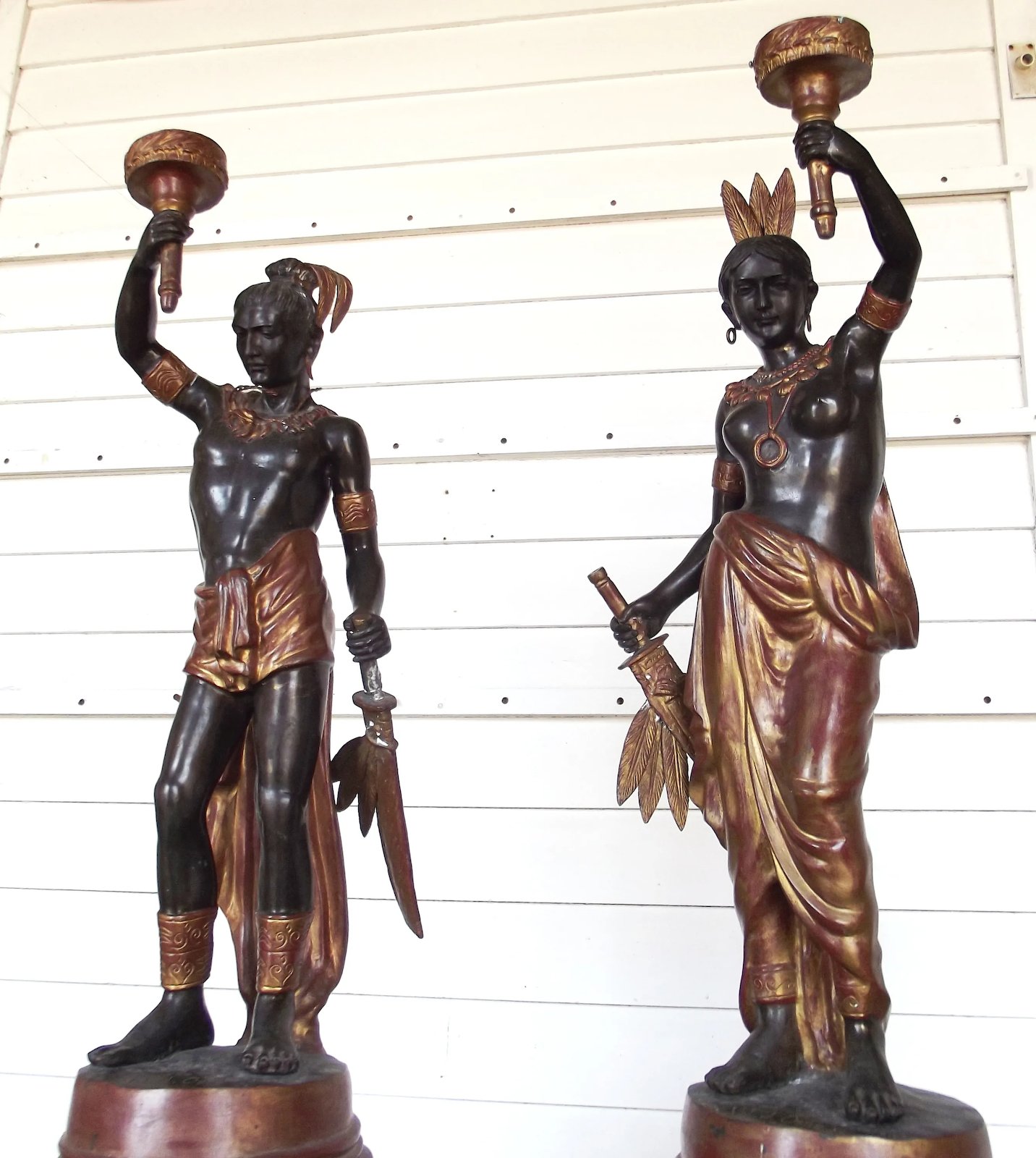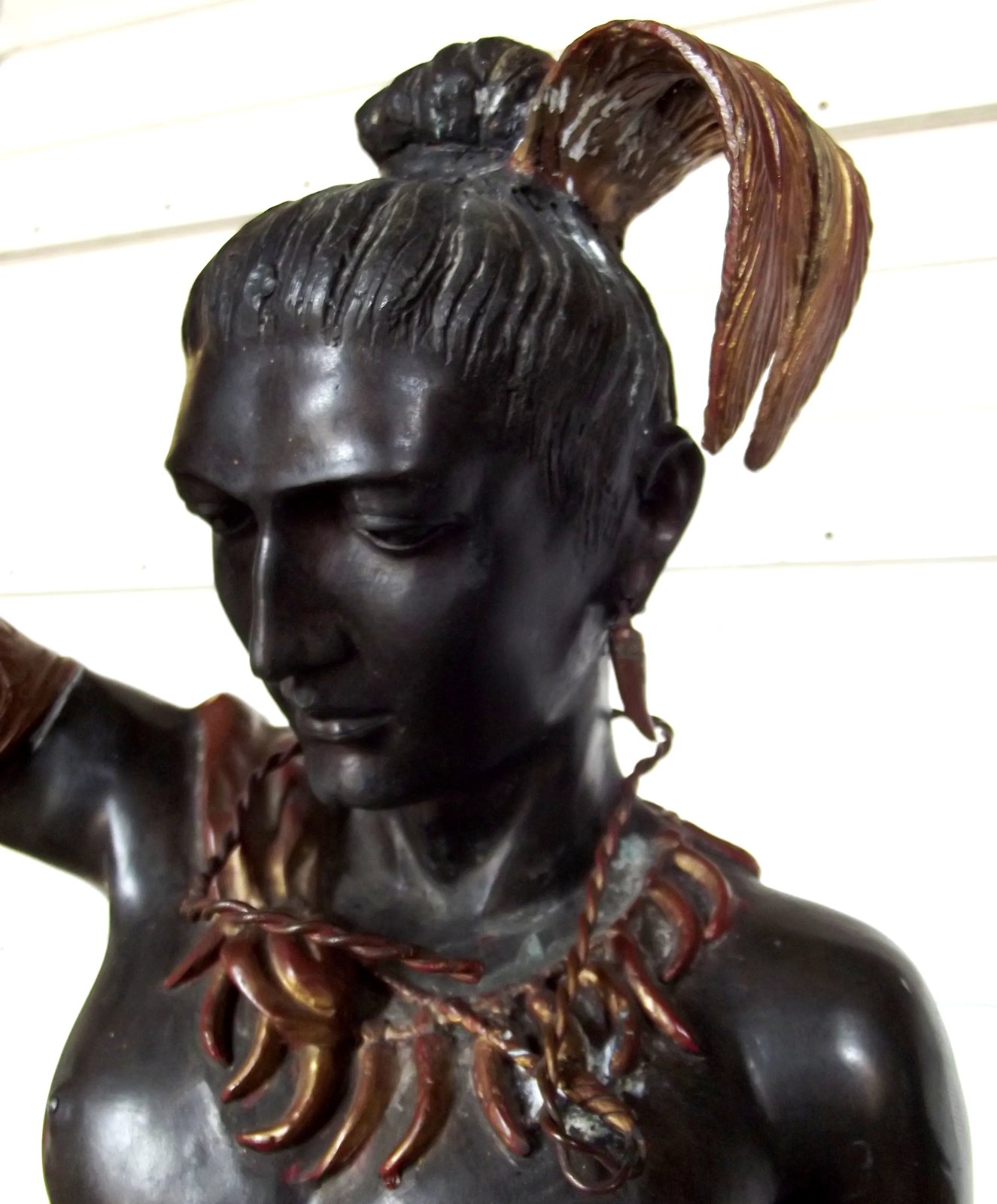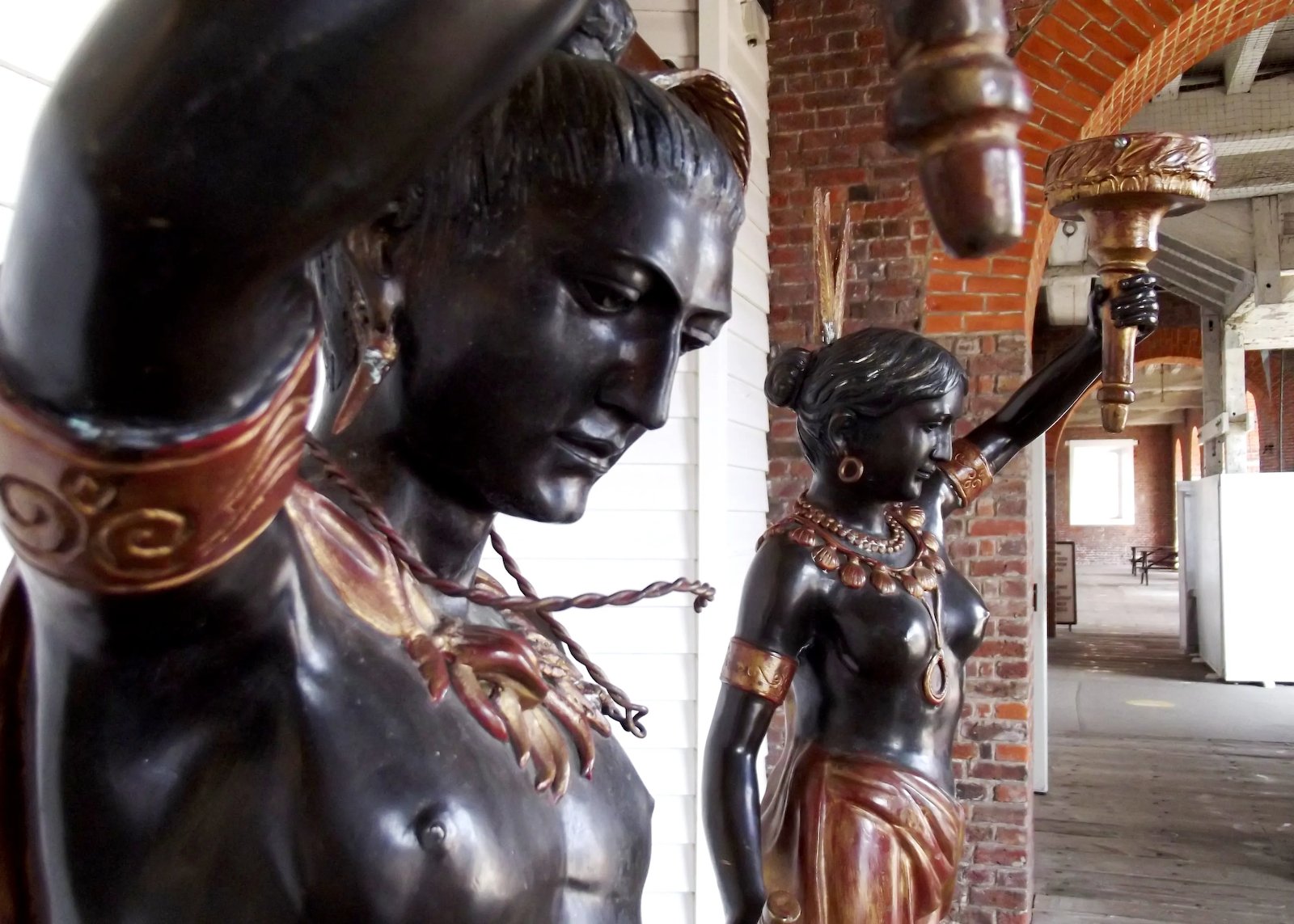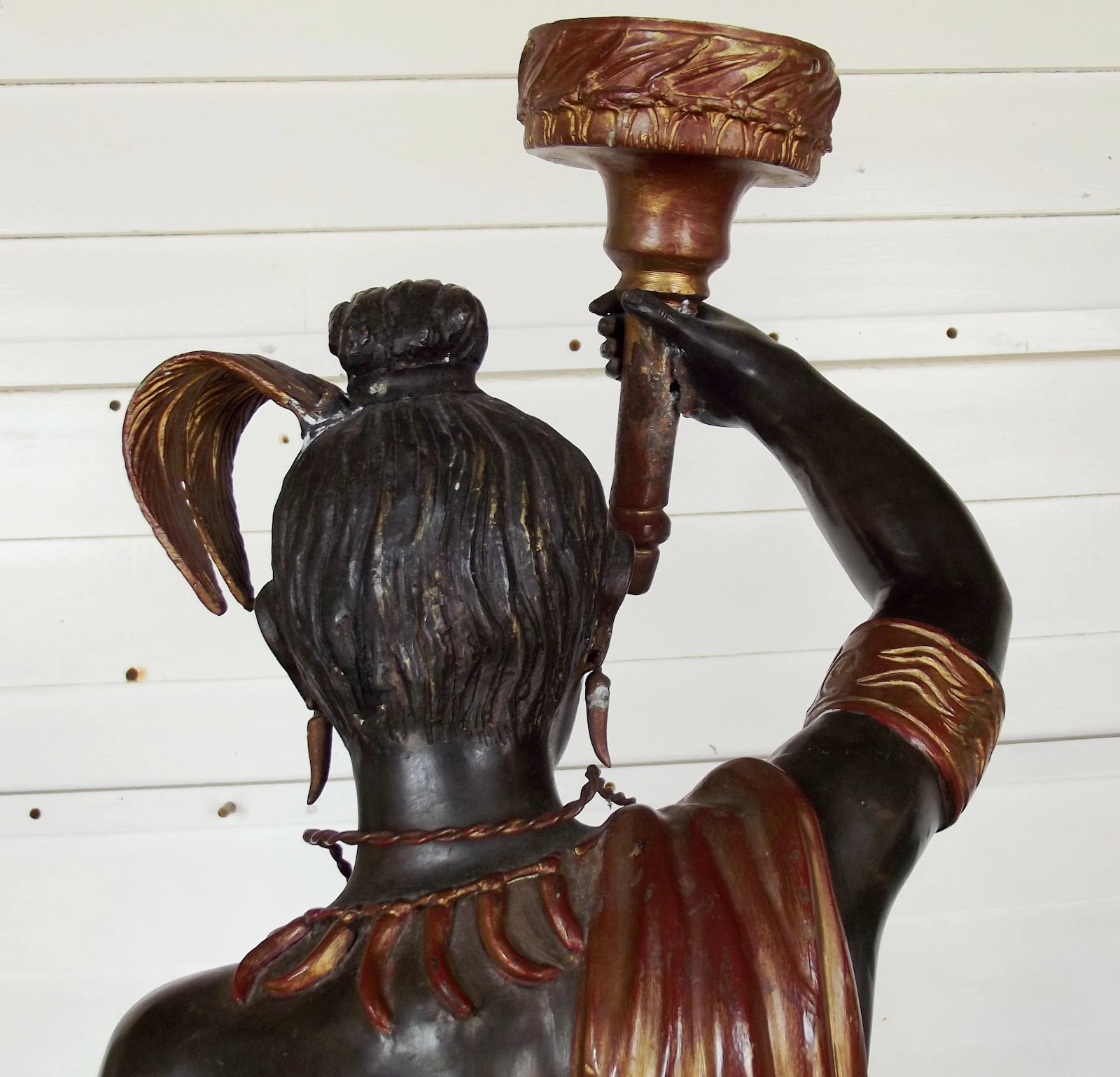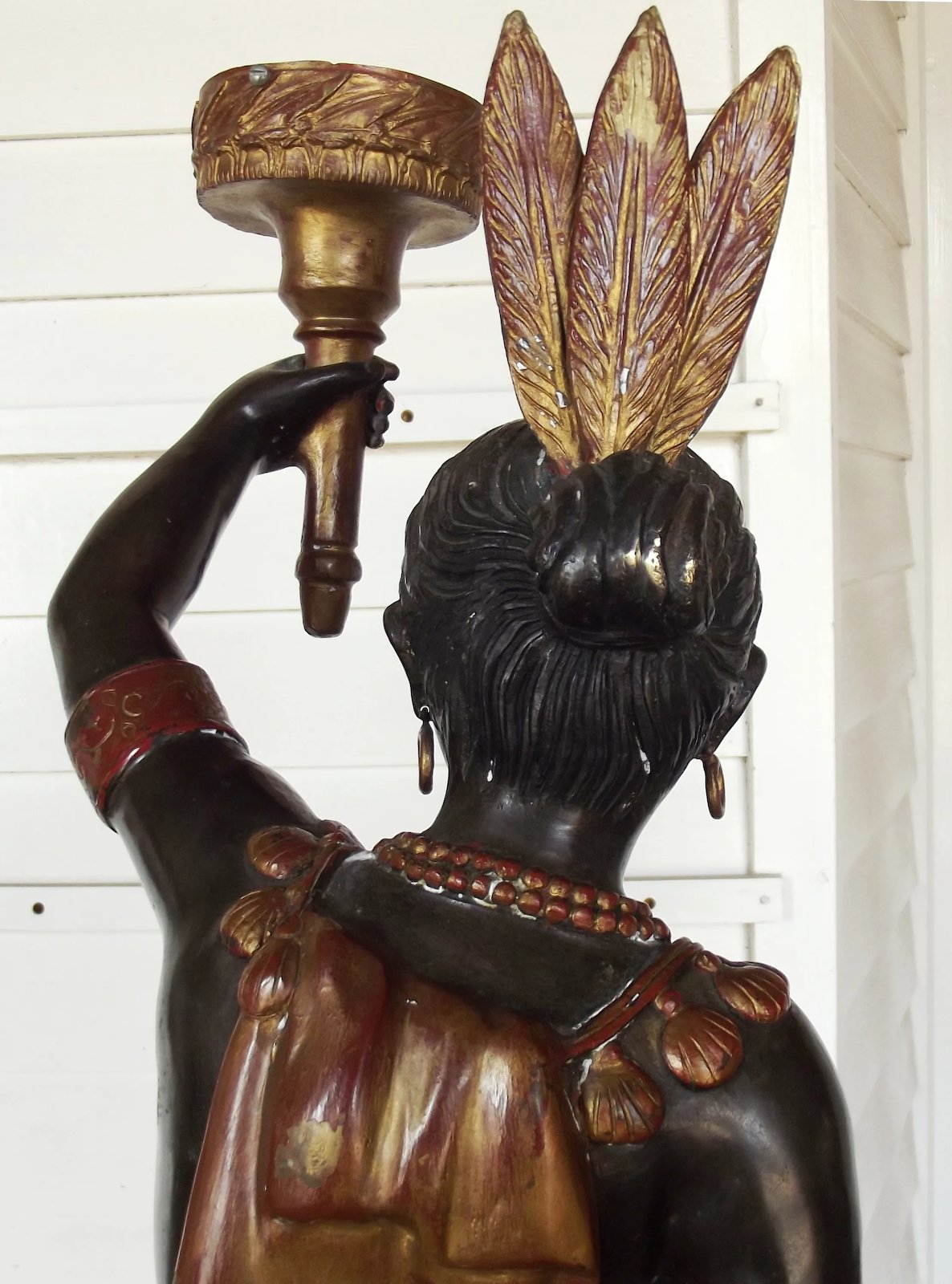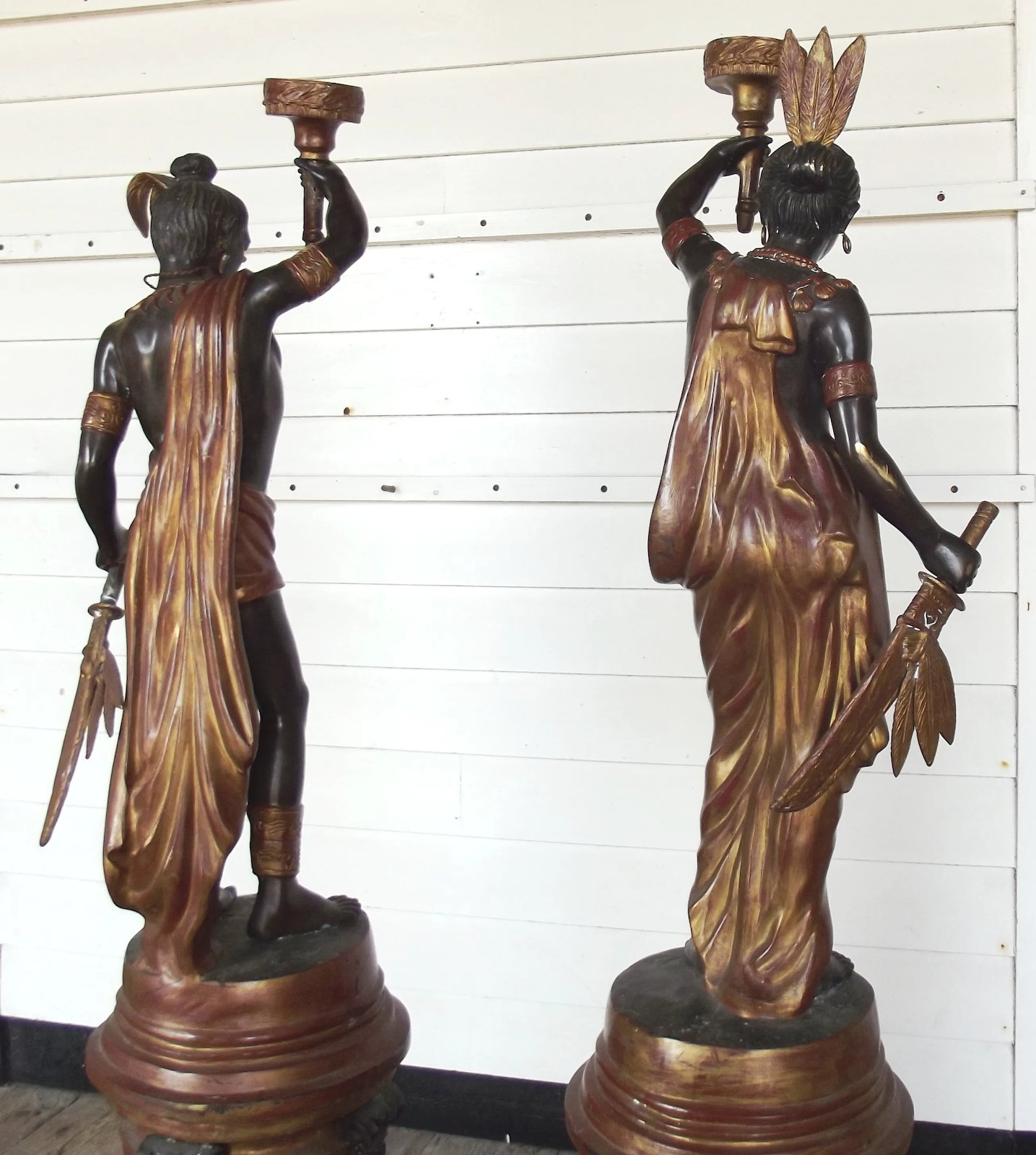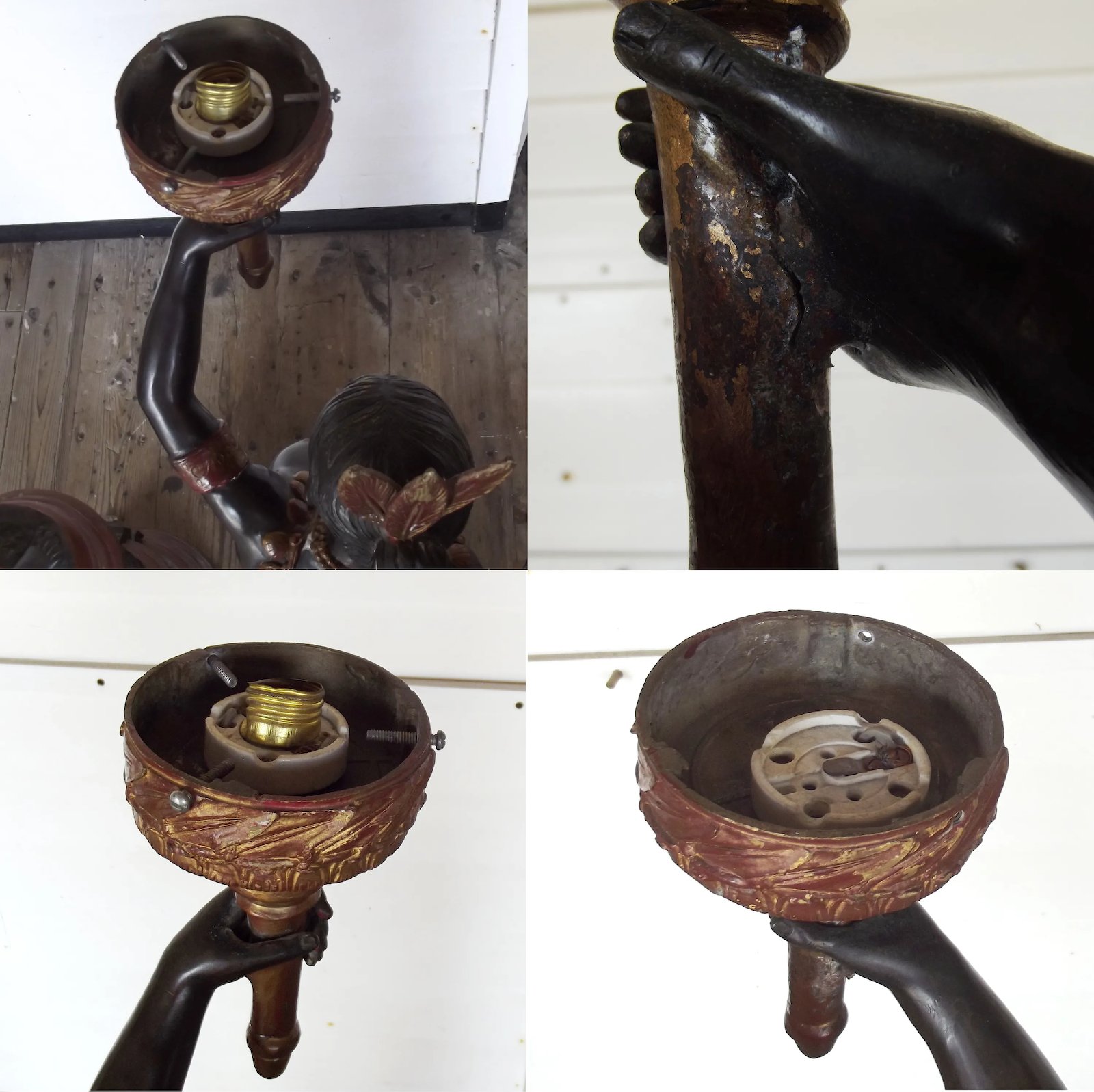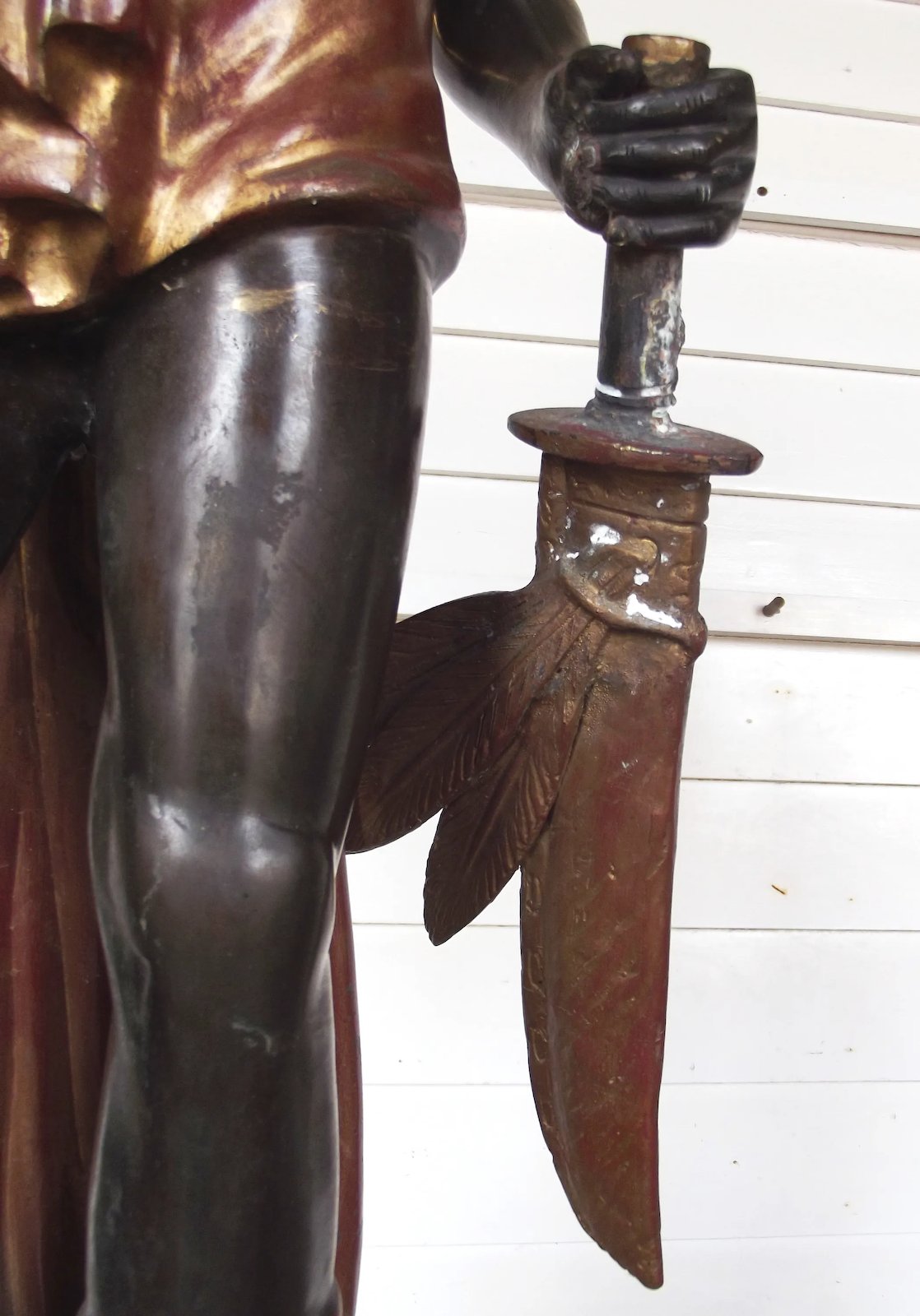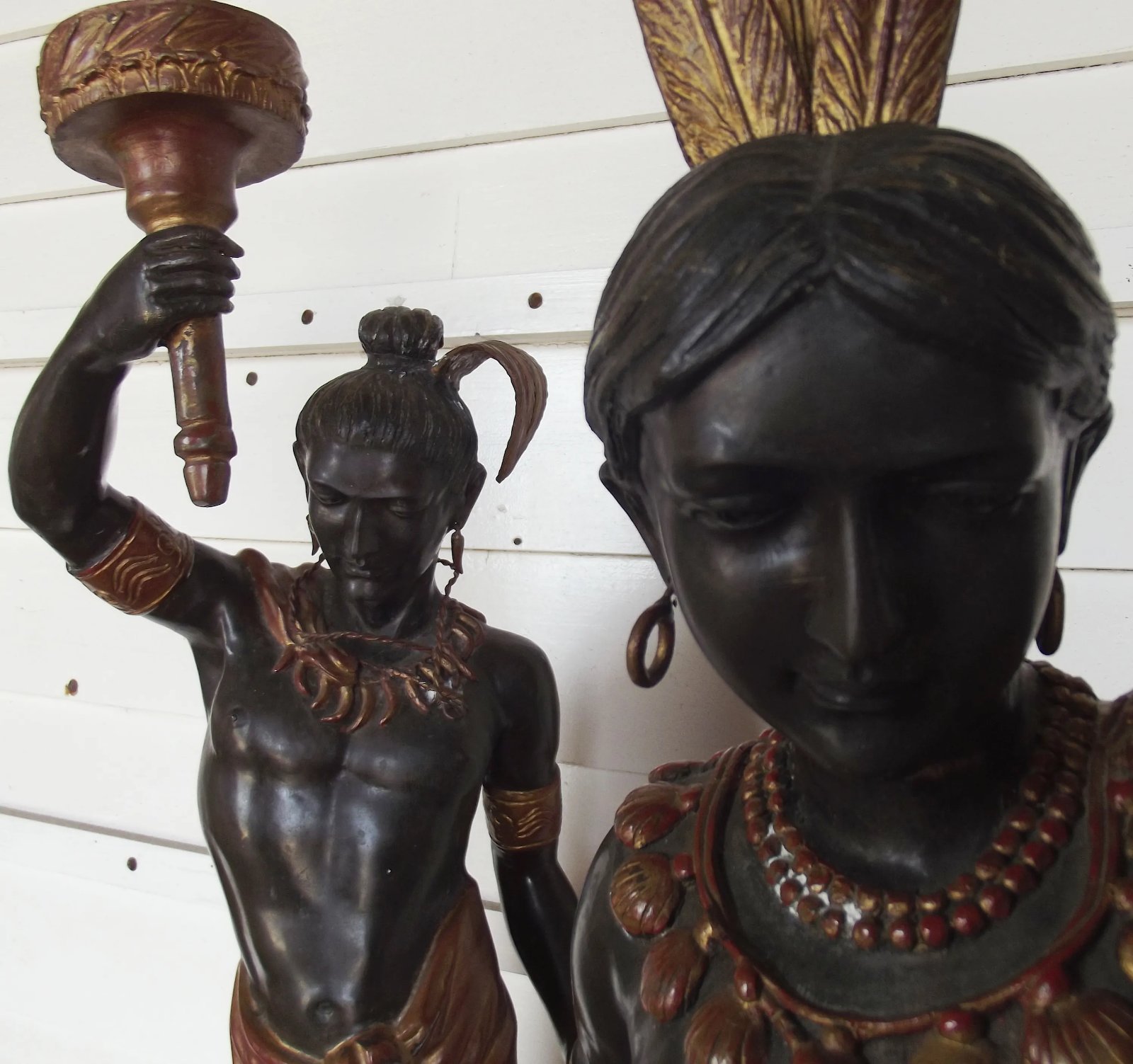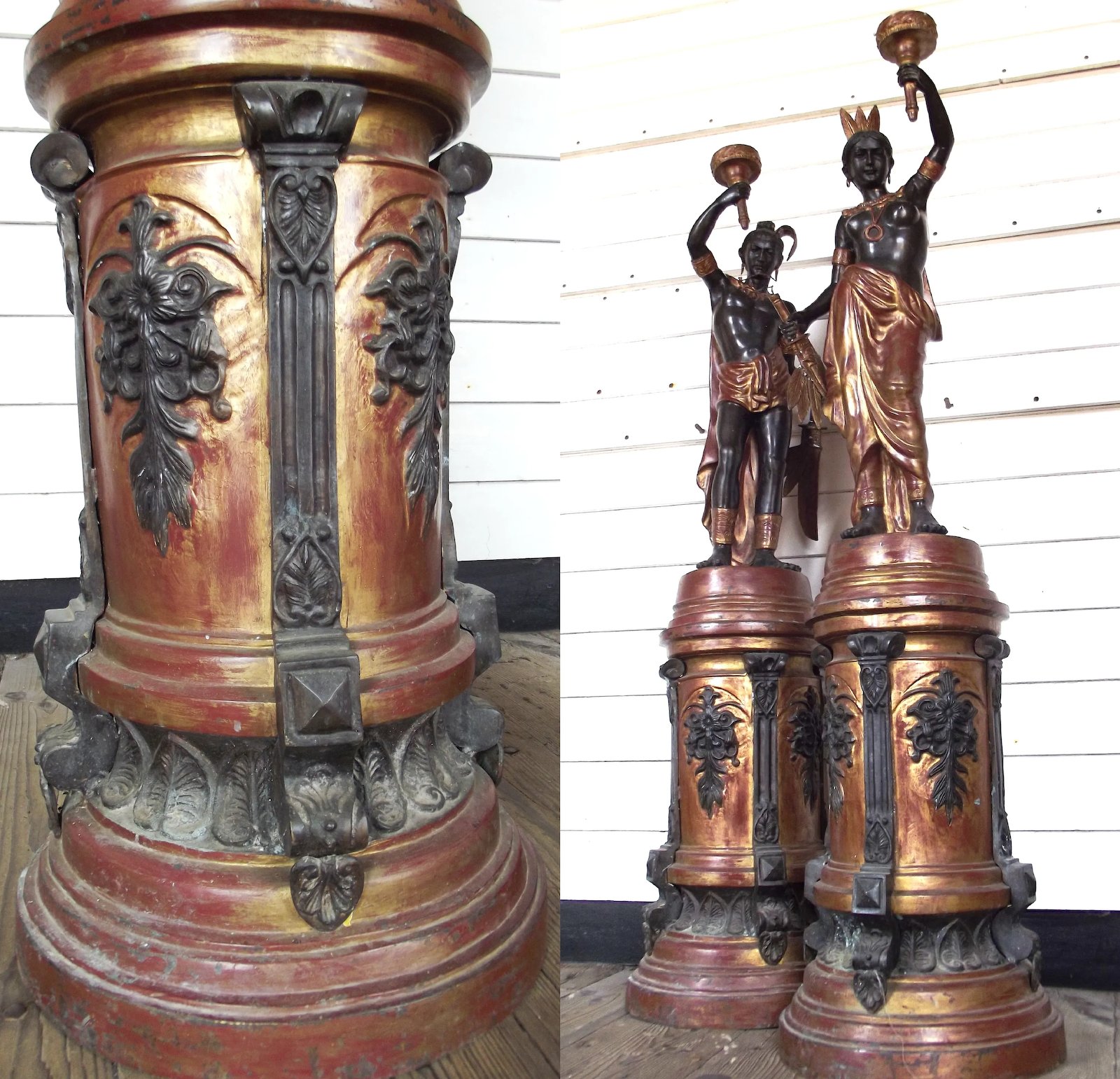~ Antique Pair of Cast Iron Torchères by The Foundry of Val D’Osne ~
We’re excited to present these two tall, antique, statuesque candelabras (torchères) depicting a romantic Native American couple, dating from somewhere around the middle of the 1800s.
They’re from a series entitled “L’ Indienne” which was designed by the French sculptor Jules Salmson and was cast by Le Fonderies d’Art du Val d’Osne in Paris. A hugely successful company who knew that collaborations with the greatest artists of the century (such as Carrier-Belleuse, Mathurin Moreau, Pradier and Eugène Piat) would contribute considerably to the reputation of the firm.
Jules Salmson (1823-1902) was a graduate of the École des Beaux-Arts, Paris where he studied alongside such luminaries as Jules Ramey, Armand Toussaint & the great Auguste Dumont.
Interestingly, the sculptures do not bear Salmson’s signature – instead they are marked by the company that cast them, this may initially seem odd, until recognising that the Val d’Osne art foundry was Jean Pierre Ander Victor’s – the very inventor of the cast iron ornamental technique!
Founded in 1835 and originally manufacturing street furniture, the company was the premier art cast iron maker in France. The outfit’s continual success included numerous gold medal awards and applause at international grand exhibitions (including The Crystal Palace 1851, where they garnered worldwide acknowledgement).
Their rapid growth meant they were able to buy out any start-up competitors, of which there were good number (including Barbezat and Ducel).
These particular sculptures illustrate a form of exoticism through a Western style. They’re interesting as they illustrate the increasing interest of French people for the United States and the collective imagery of the New World in the 19th century.
The paintwork on these pieces is of warm ochre, deep chocolate and metallic gold. Such a palette lends itself not just to the dusty, tanned leather mystique of the old west, but also reflects the warm, wine-soaked opulence of decadent 19th century Paris.
Due to the size and weight of the pair (see below) we ask you to contact us regarding shipping or collection.
~ Dimensions ~
These are off the scale! We actually have no accurate means to weigh them and estimate them to be around 30 stone each (approximately 200kg).
The figures stand from torch rim to toe at a height of 38 inches (97 cm), but the full height including the base is a palatial 70 inches (178 cm).
With lamps replaced (they would have originally been glass globes) we would say that an extra 10 inches (25 cms approx) or thereabouts would be a realistic addition for a complete height of 80 inches (almost 2 metres).
The ornamental bases have a diameter of 18” (46 cm).
~ Condition ~
These have been converted at some time to hold electrical light sources instead of the oil lamps they once did and they have discreet holes drilled through the bottom of each base to accommodate electric cables.
This work was possibly done around or between the World Wars, when much cast-iron artwork met with the sad fate of being scrapped for materials – we think somebody’s quick thinking may have made these items just useful enough for them to be spared.
With the prospect of an online sale and these being shipped abroad, we have elected to sell on as we found them, and not rewire them, nor replace the globes. Needless to say, we would recommend that upon purchase, the buyer have the wiring replaced professionally (an easy and affordable job).
It should be noted that the swords held by each figure, the torches and some items of jewelry were cast separately, and have been soldered in place at creation.
Both swords are loose in the hands, they are locked in place (cannot drop) but can rotate on the axis of their hilts to be in an adjustable manner.
The torch in the male figure’s hand however does, upon close scrutiny, show a crack (pictured) in the fused solder – but this piece too will not drop from its grip, nor is the fault-line in a place easily seen.
There are some considerable signs of wear on the paintwork but the general patina of the overall pair suits this aging effect.
#7115



